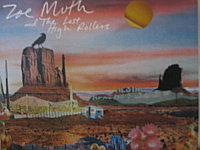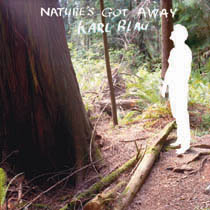Legends of Karinth vs. God Wars II
OK. For the last couple of months I wasn’t playing any muds. In fact I went so far as to delete all my mud bookmarks and shortcuts. I had reached some point where boredom and the realization I was wasting a lot of time staring at mud forums combined itself into an anti-mud brew I pretty much forced down for my own good.
Well for better or worse I’ve pretty much coughed up the last of that potion. Despite the fact that I think I know better, I’m still fascinated by text games. This fascination was thrown in high relief recently when a neighbor loaned us his Playstation and I put in some heavy time on Tony Hawk and Splinter Cell. These were the first console games I had played in probably a decade. Since I don’t play many PC games either I had suspected I was in something of a text aficionado bubble. However while these were good games, they in no way left text games in the dust. Though it was fun to customize my skater. I don’t think I’m unusual in that I love to read and write and I like games. I don’t know, maybe if I loved to draw and paint I would be playing WoW. Somehow I doubt it.
Getting back into mud world I wrote a post on TMC looking for a mud to build on. While I haven’t started building yet, as a result of the post I did start playing an excellent ROM, Legends of Karinth. If you’re into DIKU-likes I highly recommend it.
The title of this post sounds like it’s setting up a death match or something though that’s not really the case. But while I’ve been playing Karinth I’ve been thinking about God Wars II. I played GW II for a little while last year. There is no doubt in my mind that GW is an incredible mud. Basically, if you’ve never seen it, GW II is the implementation of many of those ideas you’ve see thrown around on mud design forums in the last few years. Many people talk, few do, but GW II has done it.
However I stopped playing GW II and I’m playing Karinth, a much less innovative game in many ways (though Karinth does have some cool systems). What Karinth has that GW II lacks are the traditional, story-based areas with a lot of color. What I’m hoping is that at some point GW II will add the color and then it will truly be an awesome game. But for now Karinth wins the match.





 Subscribe to Kooneiform
Subscribe to Kooneiform




Could you give one or two examples of what you consider to be “traditional, story-based areas with a lot of color”? Better yet, if possible, perhaps you could quantify which elements you feel make it so enjoyable for you – the descriptions? The exploration? The encapsulated sub-themes? The puzzles? The opponents? The way it breaks the world down into more managable sections?
In particular, I’d be interested to hear your views on how such an area might be integrated into a coordinate-based system like GW2. Would you envision it as a particularly detailed section of terrain which overlays the main world? A specific location of the world (eg a cave) that you can enter? Alternative worlds or otherwise-unreachable geographical locations that can only be accessed through the completion of specific quests?
The current main gameworld for GW2 (i.e., the Nexus) is really only a temporary solution, and a newer one has been in the works for some time. However even a new gameworld isn’t going to solve the problem you’ve mentioned. There are certainly plans for more tasks (one-shot quests), many of which will have their own separate locations within the game world, but you’ve now got me thinking about the idea of making the tasks only one feature of more detailed locations – so that while you could still only complete the task (the quest aspect) of each ‘area’ once, you could still return again and again for regular hunting and equipment gathering.
>Could you give one or two examples
Sure. Recently in Karinth I’ve been playing Dwerry Castle. This is a typical battleground area; there is the castle, garrisoned by a human force, beseiged by Elorans (furry orcs), with some surrounding terrain, including a swamp off to the north.
The nice thing about Dwerry in terms of a story area is that because of the hunting available it is more reusable than a one-shot quest area. However there are one-shot quests built in. Just to get into the castle requires a fair bit of exploration (most of the entrances have been magically blocked by the defenders). Once you’re inside you have access to a wide variety of trainers (and more hunting, if you choose to side with the Elorans or simply are indiscriminate in that regard).
There are a lot of fleshed-out NPC’s in the castle (many besides the trainers), and a few sub-quests as well. Of course the descriptions are well-done, but they are not the main focus; they only serve the content of the area, the real content being the activities you can do in the area of course.
Naturally an area like Dwerry is not super realistic; the siege has been going on for as long as the area has been installed as far as I know. However for most players I don’t think this is really an issue (Karinth is not a RPI).
One thing that interestingly enough relates Karinth to GW2 is that Karinth uses an overhead map wilderness with area nodes, much like GW2 and its locations (Karinth uses repeated stock descs for each map x,y, but it displays the overhead map and no description by default as you move). I like this a lot, but it would be interesting to see an area implemented seamlessly with GW2’s coordinate system. However the encapsulation of nodes might be much easier to manage without losing very much in gameplay.
One of the strengths of GW2 in my opinion is how much the descriptions are integrated with the game world, and I’m not sure if an area could be described in such a way to integrate with this approach and not be a huge amount of work. However there might be a way to represent the ‘color’ of the area simply with NPCs, objects, and extra scenery effects (props as on a stage) not directly tied into the descriptions. This could be an interesting way to reuse certain elements in different area layouts.
In any case I’ve gone a bit longer than I intended. I don’t know if in the end all the work this would require actually serves the core GW2 playerbase (that actually seems quite dedicated to the game), however if the new content could peacefully coexist with the existing players it would be quite an enhancement. I don’t know if you’re familiar with Robert Holdstock’s novels (particularly Gate of Ivory, Gate of Horn, in the Mythago universe), but I want to add something that seemed appropriate to GW2’s theme:
The Legion is a host of heroes from neolithic into medieval times, traveling in a magical warp of time and space on something of a permanent quest (at least as I understand it, anyway, I’m not done with the books yet). Perhaps an analogue to your Supernaturalis.
…. Who were you?